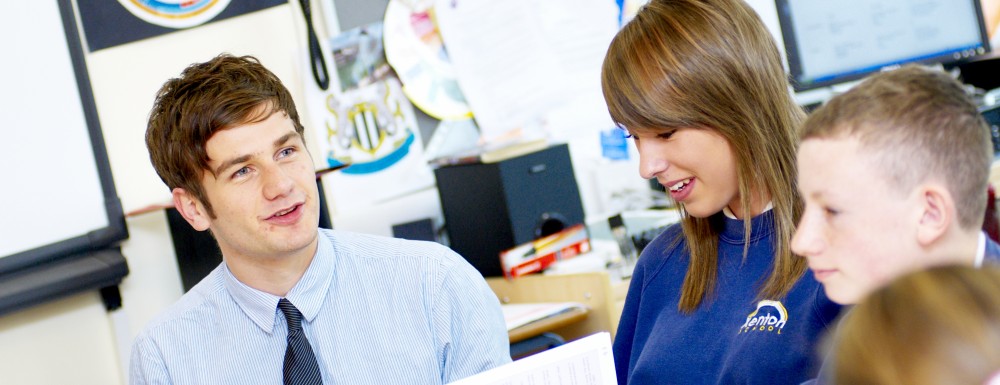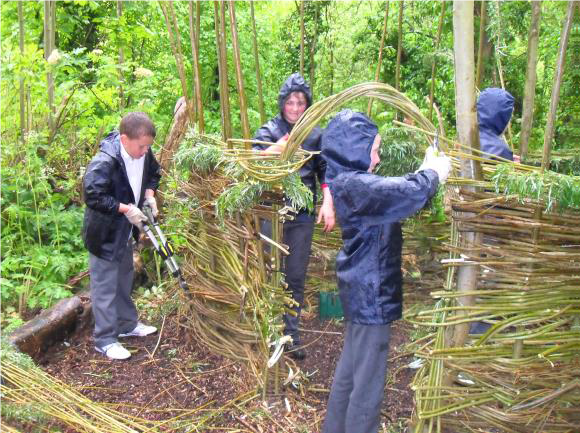Perhaps it’s the onset of summer weather, or the fact that the school term feels different after the exams and tests are over, but whatever the reason there has been a renewed interest in learning outdoors recently, as illustrated by a recent Guardian feature. On a serious and really critical note what this article demonstrates is the potential for learning outdoors to boost children’s wellbeing. In addition England’s largest outdoor learning project conducted by Plymouth University recently revealed that children are more motivated to learn when outside. It is unusual to start an ECLS blog citing research from another university, but the interest generated by this research (as evidenced on twitter) prompted us to publish an evaluation of a particular outdoor learning project conducted by CfLaT on outdoor learning in school grounds. You can access this report here.
The CfLaT report “Creative Partnerships: Creating purpose, permission and passion for outdoor learning in school grounds” is based on evidence from four primary and first schools in North-East England, Farne Primary School and St Teresa’s Catholic Primary School (both in Newcastle) and Stobhillgate First School and Tweedmouth West First School (both in Northumberland). Each school used the opportunities offered by Creative Partnerships to develop learning experiences in their school grounds during 2010 and 2011. The motivations for initiating the work; the nature of learning; the use of the school environment and the relationships were unique to each school, as were the physical, cognitive and affective outcomes. This blog outlines core themes that emerged across the schools and their outdoor learning activities. You can read all about it in the report.
Re-thinking teaching and learning
The outdoor learning projects provided an impetus for a reconsideration of the processes of teaching and learning. The Creative Partnerships projects focusing on the outdoor environment certainly offered opportunities for fun and memorable learning experiences, but the impact went deeper than this. Teachers and co-ordinators recognised that they had the chance to develop alternative approaches and to explore alternative perspectives on both pedagogy and the curriculum. One way of understanding this is through the distinction between convergent and divergent teaching. Much of the teaching and learning developed through these case study projects could be described as divergent. Divergent teaching is contingent and cannot be planned fully in advance. It does not rely on a ‘script’, but instead requires a degree of risk taking and thinking on one’s feet. In these examples it was clear that teaching staff and creative practitioners had responded to the pupils’ interests and actions. The collaborative relationship between teachers and creative practitioners supported this; allowing more child initiated learning and an approach which encouraged experiential learning.
In September 2001, Estyn (the Welsh equivalent to Ofsted) produced an evaluation report on the national foundation stage initiative for greater outdoor learning. Like the more recent Plymouth University report Estyn’s findings had resonance for us. For example Estyn stated that, ‘In most cases, children benefit from their time outdoors. They display high levels of engagement and enjoyment and their knowledge and understanding of the world and physical development improve. A majority of practitioners also say that children’s behaviour, physical fitness and stamina improve’ (Estyn, 2011, p5). The Estyn report recognises that opportunities to enhance learning outcomes linked to creativity had not been fully realised in their sample of outdoor learning, and the four Creative Partnership schools provided illustrative examples of how this might be achieved.
Lawrence Stenhouse (1975) was unequivocal in rejecting a view of teaching and learning which stated that the only way to organize the curriculum was to divide teaching programmes into pre-specified outcomes in terms of measurable changes in student behaviour. He argued for the transformation of the teacher–pupil relationship. In such a transformation there has to be a redrawing of roles, responsibilities and power implying a less authoritarian structure. Such a transition can be recognised in the four case study schools, with the introduction of creative practitioners as ‘experts’ and evidence of teachers learning skills alongside pupils, of pupils learning from pupils and opportunities for family involvement in learning activities. There was also evidence that teachers welcomed the opportunities for their pupils to surprise them, and celebrated both the intended and unintended learning outcomes and consequences.
Teacher development and learning
The same could be said of the development of teaching staff. In each case the co-ordinators were able to identify tangible, but not always planned for, staff development outcomes. The teachers themselves had overcome some of their anxieties about ‘letting go’ and enjoyed the chance to work across year groups, to take alternative roles in supporting and engaging in learning, and to draw on the expertise of practitioners who reciprocated by drawing out their expertise as teachers. Traditionally schools and teachers find change difficult (Tyack & Cuban, 1995, Leat, 1999) especially in the direction of more innovative pedagogies. Substantial pedagogic innovation usually requires some behavioural change in teaching and therefore also changes in thinking and in beliefs about pupils, learning or teaching – and perhaps all three. There is good evidence that the Creative Partnerships projects created the space and permission for some of these changes to start to occur. In this environment teachers and pupils responded positively to what they recognised as more fluid teaching approaches, often driven by the ‘natural’ processes adopted by practitioners based on craft skills, experimentation, or exploration of ideas, environments and techniques. Leadership, effective co-ordination and permissions were all critical. This was also a conclusion reached by Estyn (2001) who found that the ‘vision of leaders and their commitment to making the best use of outdoor learning are key factors’ (p5). Where scepticism of the value of outdoor learning was found in the Welsh sample the outdoor environment was not used well enough. One of the significant characteristics of the Creative Partnerships sample in this report was that such scepticism (if it had existed) had been largely overcome and thus real progress was made in developing appropriate teaching and learning in the enhanced outdoor areas of each school.
In Timperley et al.’s (2007) ‘best evidence synthesis’ study of effective professional development (as measured by student outcomes), one of the most important factors implicated in teacher learning was the challenge to the existing beliefs that are embedded in the everyday discourse of some schools, usually that certain groups of students could not learn as well as other groups. There was evidence from the schools that transferring learning to the outdoor environment, and taking alternative approaches to planning, enacting and valuing learning had allowed some teachers’ assumptions to be challenged. In this environment each school had evolved as a community; with new elements of school improvement planning being developed and plans being made for further innovative approaches. The experience of Creative Partnership projects had helped each school to recognise that the value in innovation is not simply in adopting one new approach after another. They have learned that they can enrich the curriculum through exploiting multiple opportunities for learning, extending relationships for learning and recognising a very wide range of outcomes of learning.
Written by Lucy Tiplady, CfLaT Research Associate, Newcastle University and
Dr Rachel Lofthouse, Head of Education, Newcastle University.
References:
Estyn (2011) Outdoor learning: an evaluation of learning in the outdoors for children under five in the Foundation Phase – September 2011
Stenhouse, L. (1975) An Introduction to curriculum research and development, London: Heinneman.
Timperley, H., Wilson, A., Barrar, H. and Fung, I. (2007) Teacher Professional Development and Learning, Best Evidence Synthesis Iteration (BES), Auckland: Ministry of Education.
Tiplady, L. & Lofthouse, R. (2011) Creative Partnerships: Creating purpose, permission and passion for outdoor learning in school grounds. Research Centre for Learning and Teaching, Newcastle University, UK.
Tyack, D. & Cuban, L. (1995) Tinkering towards Utopia, Harvard: Harvard University Press.


